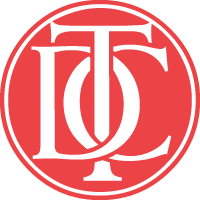Font Matters: The Fine Line between Brand Difference and Indifference
by Stewart Devlin and Bruno Maag
The rapid spread of communication from print to digital platforms has both challenged the type industry and propelled it into the center of communication. More people than ever depend on type both in their social and professional activities – whether in cutting a Tweet to fit, selecting point size for an email or choosing the most arresting font for a corporate presentation.
This shift has opened up huge potential for a brand’s global reach. New opportunities to embrace consumers in different regions require a degree of cultural empathy and understanding.
A brand that shows indifference to local culture risks alienating the intended audience, while a carefully crafted font can open doors for a brand in diverse cultures, in a way that is immediate and direct. That’s why, done well, a coherent typographic expression in the form of a proprietary font is now an indispensable tool for an organization’s worldwide success.
The challenge in developing a proprietary global font is to create a unified visual language across multiple, complex writing systems, without alienating consumers by being insensitive to cultural nuances. In our experience, even when a type designer has a huge amount of experience designing complex scripts, the nuances involved in particular scripts, from Arabic to Cyrillic, are sufficiently significant to require hiring specialist consultants.
For instance, when we developed the Arabic script for Intel Corp.’s proprietary font, Intel Clear, we first analyzed features of Intel Clear Latin and then, with the help of consultants Kristyan Sarkis and Thomas Milo, both experts in Arabic writing systems, we translated them to work – in terms of modulation, contrast and proportions – with the Arabic script, with the goal of respecting the Naskh style. This is important because Intel Clear Arabic covers Arabic, Farsi and Urdu languages. In making our selections, we considered the trend in which typographic letterforms are differentiated from written (or calligraphic) ones. While the latter is embraced in some of the more Westernized countries in which Intel Clear would be used, we opted for the more traditional forms to avoid a negative response from users in living in countries where allegiance to calligraphic tradition is strong.

Work in progress: designing Intel Clear to conform to more traditional calligraphic traditions in Arabic scripts.
The aim with a multi-script, global font is to achieve a look and feel common to all the scripts that make up the font suite. As important as achieving a consistent texture in a body of text on a page is ensuring individual characters look “right” – not always a simple task. Take, for instance, the Cyrillic Zhe ‘Ж’. This character may appear inordinately wide to the Latin reader and the natural desire would be to compress it, whereas the reader of Cyrillic would expect it to be given space to breathe.
When a company seeks to gain a foothold in emerging markets, a close understanding of the culture and of the familiar visual language and expression will demonstrate its sense of belonging within a community. This is just as important for employees of an organization as it is for consumers and potential consumers.
Since rolling out Intel Clear, feedback from Intel’s regional staff included a sense of pride and belonging because of the respectful and appropriate way that their language and writing systems were considered.
One particularly important emerging market is India, where there are more than 20 recognized languages in a country of 1.3 billion people. Luxury brands have for many years been able to communicate in English which, along with Hindi, is the official language. Hindi is one of around a dozen Indic languages that utilize the Devanagari script. Any company, but particularly those selling everyday products (think shampoo and toothpaste), needs a Devanagari font in its tool-box, to reach a significant number of consumers.

Examples of extremely Latinized Devanagari script used on creamy snuff product Dentobac, sold in India. (designer unknown)
What else does it take to develop a proprietary, global font? Time. The development, creation and rollout of multiple complex scripts from the Latin script requires significant lead times in advance of desired rollout dates. Chinese alone has 27,000 characters and it can take up to 18 months to produce a complete character set.

Creating complex scripts from the Latin script is time-intensive. Here, an example of how design features of the Latin are matched into the strokes of the Chinese.
Once the drawing has been completed, engineering takes over to turn the designs into a fully functioning font accessible with ease by the end user. In the case of complex writing systems, this may mean enabling it to work from right to left and from bottom to top. Every action has to be followed by rigorous testing. And, nowadays, every font will need to be treated so that it behaves correctly on a variety of screen-based devices, from phones to tablets to laptops.
To avoid indifference, type should not be an afterthought in the branding of an organization. Indeed, for a brand to achieve significant results in the global market, type designers should be involved from the start and consideration of type has to be integral.
Payoff? In a world in which the digital arena is the meeting place for brands and communication, fonts are what give brands life and separate the truly global from the faux local.
Stewart Devlin & Bruno Maag are speaking at the Type Directors Club in New York on Thursday, October 23. Register Here.
By Stewart Devlin and Bruno Maag



